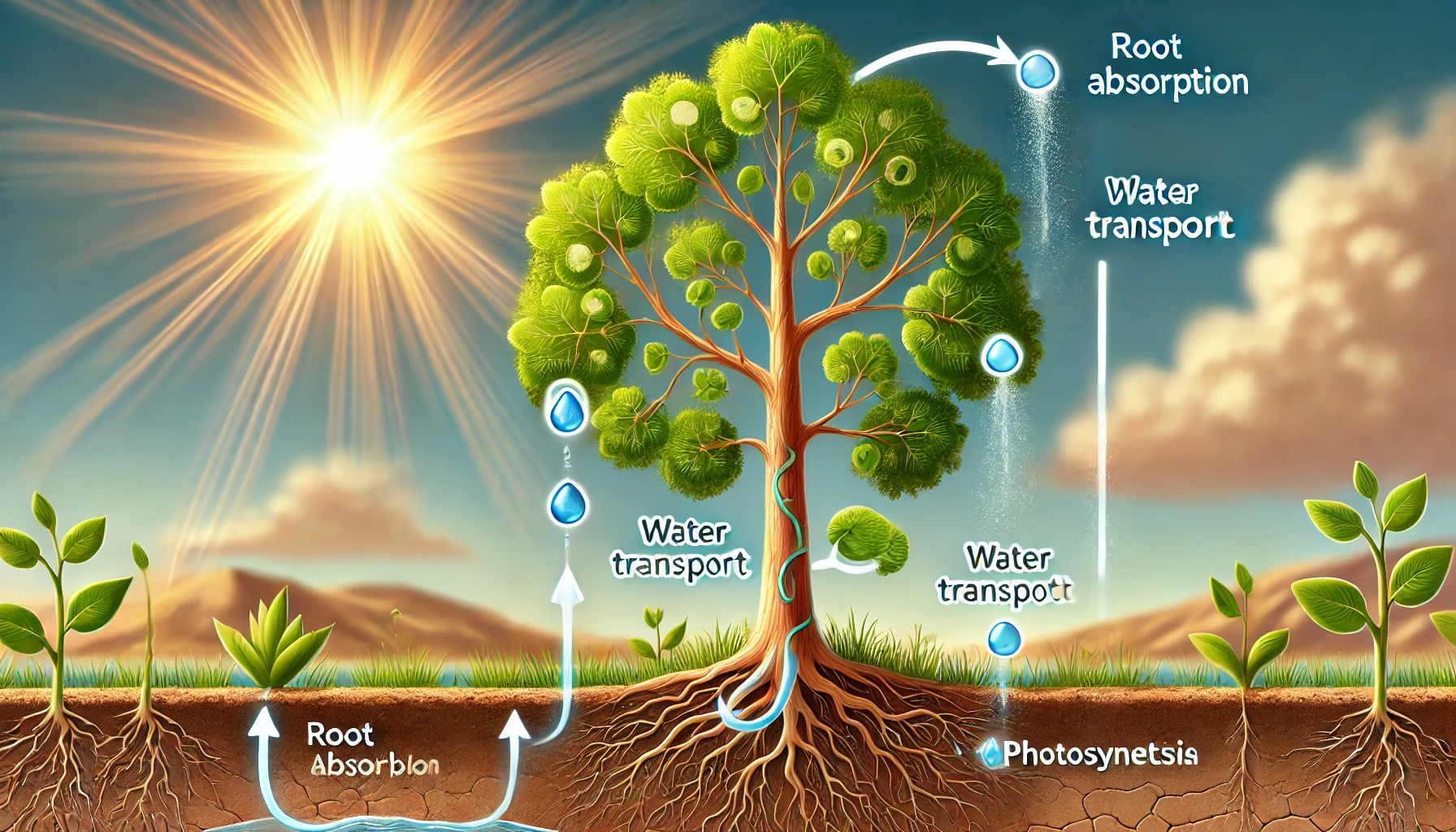In tall trees, the process by which water gets from the roots to the leaf tips is accomplished by transpiration, tension, cohesion mechanisms, and gradients in water potential. The opening and closing of stomata regulates water loss and carbon dioxide uptake, enabling water movement. These systems allow plants to survive in a variety of environments.
In general, the maximum height of a water column that can be created in the atmosphere is about 10 meters, but some of the trees on Earth are over 110 meters tall. How is it possible for water absorbed by the roots to reach the top of a tree 110 meters high?
Because the concentration of water in the atmosphere is lower than the concentration of water in the leaves, water diffuses into the atmosphere through the stomata in the epidermis of the leaves, a process called transpiration. As water escapes through the stomata, it creates a tension inside the xylem, the tissue that serves as a channel for water, that pulls the water column upward. The reason why the water column can be pulled up without breaking is due to the strong cohesion of water. Because the cohesion of water is greater than the tension in the water pipe, the water column is connected like a string from the roots to the leaves without breaking. This action that allows water to be transported in water pipes is called the ‘transpiration ⎯ tension⎯ cohesion’ mechanism.

This mechanism can be described in terms of water potential. The water potential is the amount of water that a soil or plant contains, converted into an energy concept, and represents the ability of water to move. The unit is pascal (Pa, 1 MPa = 10^6 Pa). Water moves from a higher water potential to a lower water potential without expending any energy. Pure water has a water potential of 0 MPa, which decreases as the pressure decreases or as solutes are added to increase the ionic concentration. Soil has a water potential of -0.01 to -3 MPa and the atmosphere has a water potential of -95 MPa. In general, the water potential decreases as you move from soil to roots, stems, and leaves, and water diffuses from the roots, through the stem, to the leaves, and then into the atmosphere through stomata.
This change in water potential is one of the main drivers of water movement within a plant; in particular, it is the gradient of water potential that allows water to be pulled upward in tall trees. Water movement is always from higher to lower water potentials, so water in the soil moves from the roots to the trunk and from the trunk to the leaves. This allows water to reach the highest points of the tree.
The stomata are opened and closed by a pair of stomatal cells on the leaf surface. When light increases the concentration of ions inside the stomata, the water potential decreases, allowing water to enter the stomata and open the stomata. Plants can then absorb carbon dioxide from the atmosphere and produce glucose through photosynthesis. The problem is that when plants open their stomata to absorb carbon dioxide, they lose water, and conversely, when they close their stomata to prevent water loss, they have to give up carbon dioxide. To solve this dilemma, plants, which need both water and glucose, have evolved a system that regulates the uptake of carbon dioxide and the release of water by opening stomata during the day when there is sunlight for photosynthesis and closing them at night when there is not. The result is a constant cycle of stomatal opening and closing.
Plants have also evolved a variety of mechanisms to adapt to environmental changes and survive. For example, plants living in regions with extreme climatic conditions have developed the ability to regulate the opening and closing cycles of their stomata to maximize water conservation. These adaptations allow plants to overcome stresses caused by drought or excessive moisture, allowing them to survive in a variety of environments.
In conclusion, the process by which water reaches the leaf tips in tall trees is accomplished by the mechanisms of transpiration, tension, cohesion, and gradients in water potential. This process plays an important role in helping plants survive and respond to environmental changes. This amazing ability of plants is another example of the complexity and sophistication of nature.
 I’m a blog writer. I want to write articles that touch people’s hearts. I love Coca-Cola, coffee, reading and traveling. I hope you find happiness through my writing.
I’m a blog writer. I want to write articles that touch people’s hearts. I love Coca-Cola, coffee, reading and traveling. I hope you find happiness through my writing.